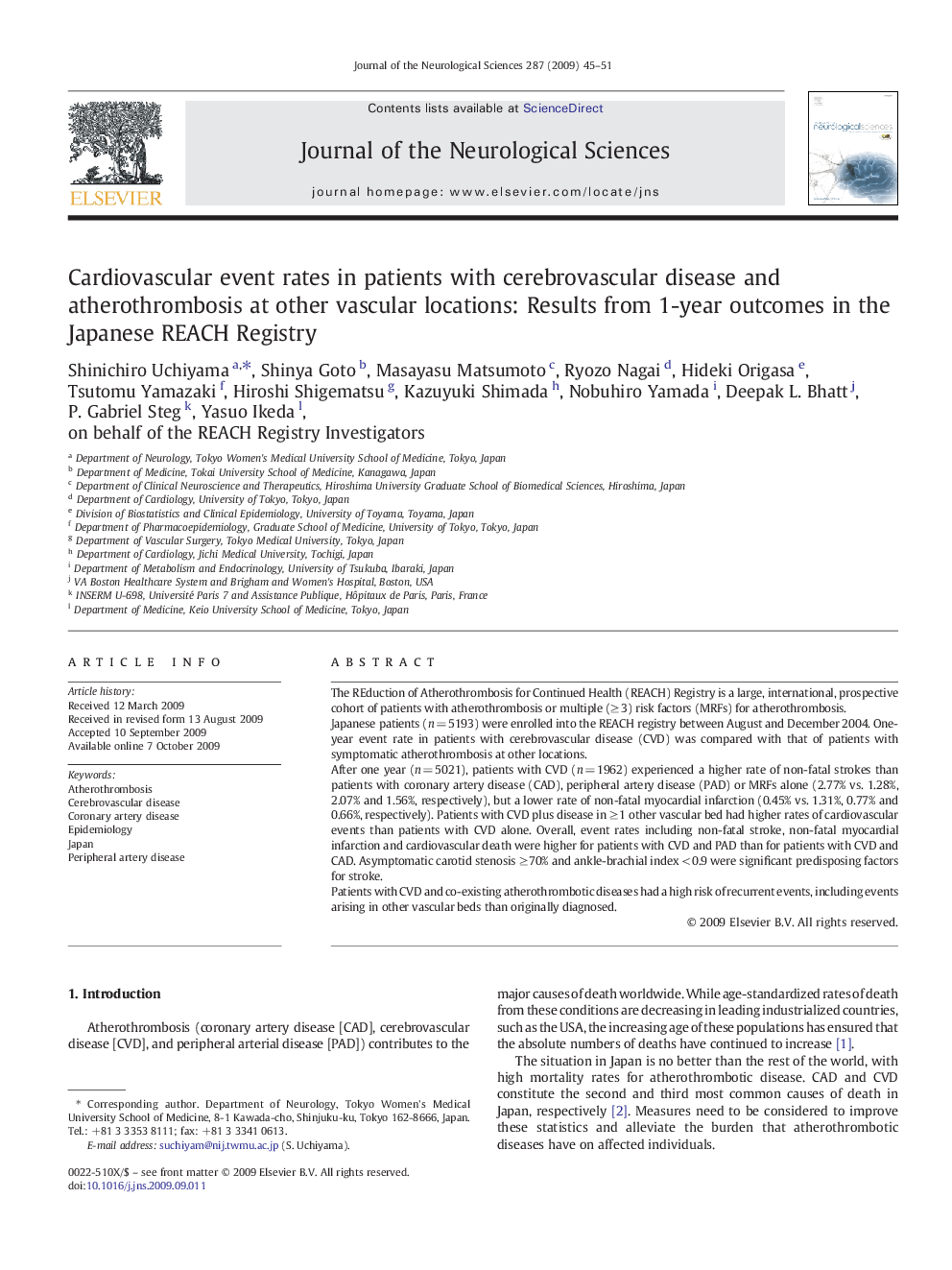| Article ID | Journal | Published Year | Pages | File Type |
|---|---|---|---|---|
| 1914798 | Journal of the Neurological Sciences | 2009 | 7 Pages |
The REduction of Atherothrombosis for Continued Health (REACH) Registry is a large, international, prospective cohort of patients with atherothrombosis or multiple (≥ 3) risk factors (MRFs) for atherothrombosis.Japanese patients (n = 5193) were enrolled into the REACH registry between August and December 2004. One-year event rate in patients with cerebrovascular disease (CVD) was compared with that of patients with symptomatic atherothrombosis at other locations.After one year (n = 5021), patients with CVD (n = 1962) experienced a higher rate of non-fatal strokes than patients with coronary artery disease (CAD), peripheral artery disease (PAD) or MRFs alone (2.77% vs. 1.28%, 2.07% and 1.56%, respectively), but a lower rate of non-fatal myocardial infarction (0.45% vs. 1.31%, 0.77% and 0.66%, respectively). Patients with CVD plus disease in ≥ 1 other vascular bed had higher rates of cardiovascular events than patients with CVD alone. Overall, event rates including non-fatal stroke, non-fatal myocardial infarction and cardiovascular death were higher for patients with CVD and PAD than for patients with CVD and CAD. Asymptomatic carotid stenosis ≥ 70% and ankle-brachial index < 0.9 were significant predisposing factors for stroke.Patients with CVD and co-existing atherothrombotic diseases had a high risk of recurrent events, including events arising in other vascular beds than originally diagnosed.
